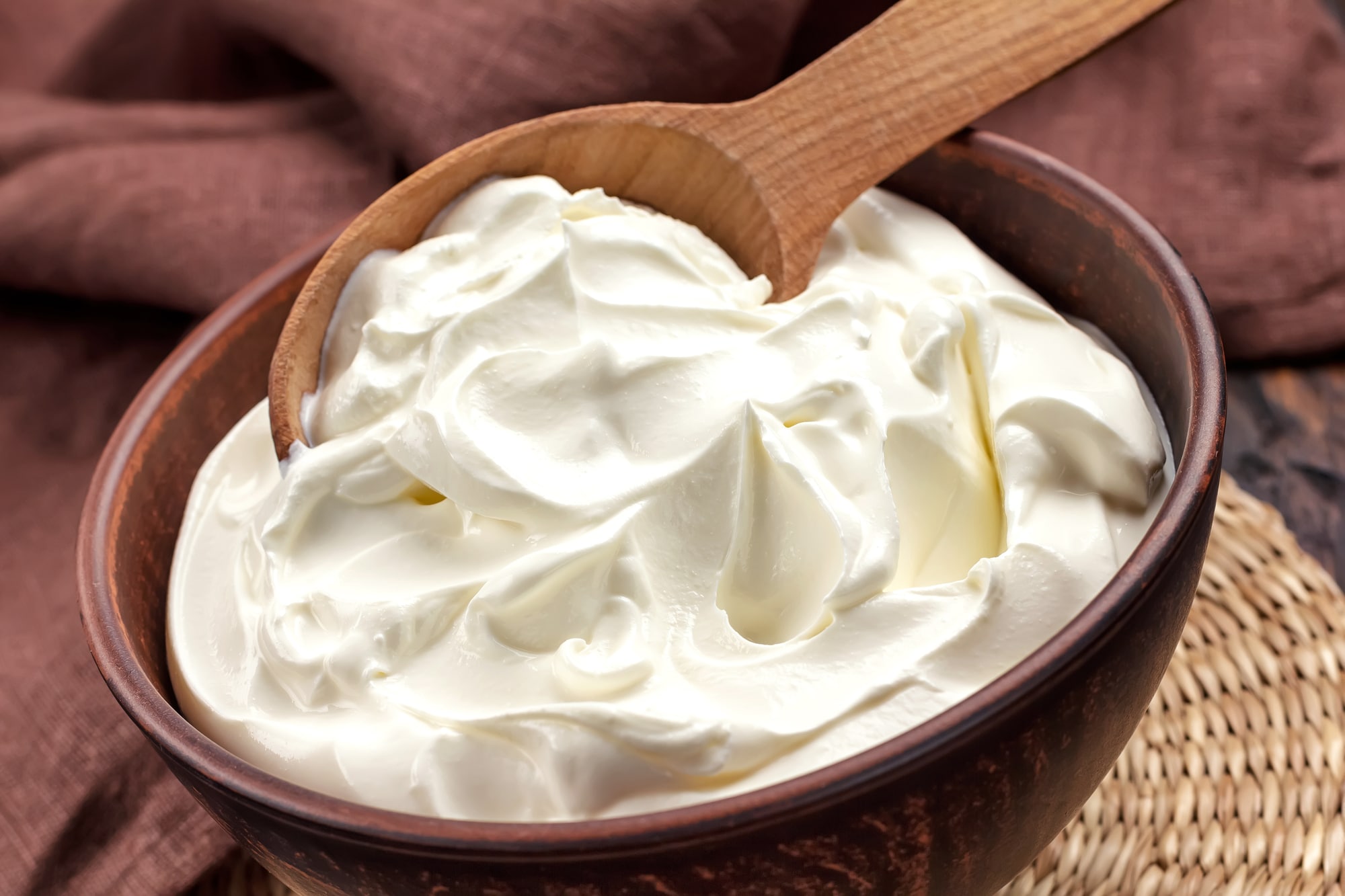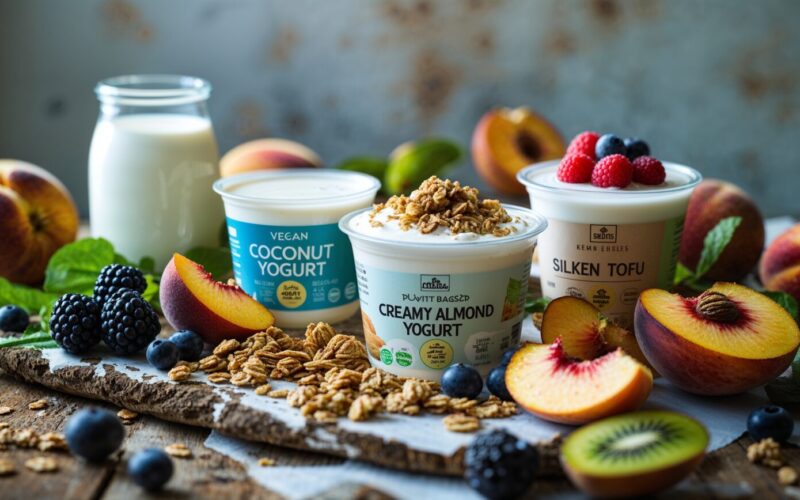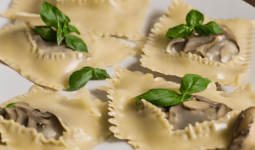You’re halfway through measuring ingredients for your favorite muffin recipe when disaster strikes—no yogurt in the fridge.
Before you abandon your baking plans or make an emergency grocery run, you’ll be relieved to know that the best substitutes for yogurt in baking are likely sitting in your kitchen right now.
Yogurt serves multiple crucial functions in baking beyond just adding moisture.
It provides acidity that activates baking soda, creates tender crumb structure, and contributes to the overall flavor profile of your baked goods.
Understanding these roles helps you choose the perfect substitute that won’t compromise your final results.
Whether you’re dealing with dietary restrictions, empty pantries, or simply want to experiment with different flavors and textures, the right yogurt alternative can actually enhance your recipes.
Why Yogurt Works So Well in Baking
Before diving into substitutes, it’s essential to understand what makes yogurt such a valuable baking ingredient.
Yogurt contains natural acids that react with leavening agents like baking soda, creating the lift and light texture you want in cakes, muffins, and quick breads.
The protein content in yogurt also contributes to structure, while its fat content adds richness and moisture.
Greek yogurt, in particular, provides extra protein that can improve the texture of dense baked goods like pound cakes and coffee cakes.
Pro Tip: When substituting for yogurt, always consider both the acid content and moisture level to maintain the recipe’s intended chemistry.
Best Dairy-Based Yogurt Substitutes
Sour Cream

Sour cream stands out as the top yogurt substitute for most baking applications. It provides similar tangy flavor and creamy texture, making it ideal for cakes, muffins, and quick breads.
- Substitution ratio: Use 1:1 replacement
- Best for: Cakes, muffins, pancakes, and coffee cakes
- Texture impact: Creates exceptionally moist and tender crumb
Buttermilk
Traditional buttermilk offers the perfect acidic punch that many yogurt-based recipes require. Its thinner consistency works particularly well in pancakes, waffles, and lighter cake batters.
Substitution ratio: Use 3/4 cup buttermilk for every 1 cup of yogurt
Best for: Pancakes, waffles, biscuits, and light cakes
Additional tip: Reduce other liquids in the recipe by 1/4 cup
Cream Cheese (Softened)
Cream cheese creates rich, decadent results and works exceptionally well in dense baked goods. Mix softened cream cheese with a tablespoon of milk to achieve yogurt-like consistency.
Substitution ratio: Use equal amounts, thinned with milk
Best for: Pound cakes, cheesecakes, and rich muffins
Flavor note: Adds extra richness and mild tangy flavor
Plant-Based and Dairy-Free Alternatives
Plant-Based Yogurts
Commercial dairy-free yogurts made from coconut, almond, or soy provide the closest match to traditional yogurt in both texture and function. Choose unsweetened varieties to avoid altering your recipe’s sugar content.
Substitution ratio: Use 1:1 replacement
Best options: Coconut yogurt for richness, soy yogurt for protein
Consider: Coconut-based options offer the creamiest texture for baking
Silken Tofu
Blended silken tofu creates smooth, neutral-flavored results that won’t compete with other ingredients. Its protein content makes it excellent for structure in denser baked goods.
Substitution ratio: Use 1/4 cup blended silken tofu per 1/4 cup yogurt
Best for: Chocolate cakes, brownies, and dense muffins
Preparation: Blend until completely smooth before using
| Substitute | Substitution Ratio | Best Use | Texture Impact |
|---|---|---|---|
| Sour Cream | 1:1 | All baking | Moist, tender |
| Buttermilk | 3/4 cup per 1 cup yogurt | Light batters | Fluffy, airy |
| Cream Cheese | 1:1 (thinned) | Rich cakes | Dense, rich |
| Plant Yogurt | 1:1 | All baking | Similar to regular |
| Silken Tofu | 1:1 (blended) | Dense bakes | Smooth, sturdy |
Fruit-Based Substitutes for Specific Applications
Applesauce
Unsweetened applesauce works beautifully in lighter cakes and muffins, though you may need to add lemon juice for acidity if your recipe relies on yogurt’s tang for leavening.
Substitution ratio: Use 1:1 replacement
Best for: Spice cakes, apple muffins, and lighter breads
Important: Add 1 tablespoon lemon juice per cup if recipe needs acid
Mashed Banana
Ripe, mashed bananas add natural sweetness and moisture, making them perfect for breakfast baked goods and quick breads. The banana flavor will be present, so use strategically.
Substitution ratio: Use 1/2 cup mashed banana per 1 cup yogurt
Best for: Banana bread, breakfast muffins, and pancakes
Flavor consideration: Works best when banana complements the recipe
Key Takeaway: Fruit-based substitutes work best in recipes where their flavor enhances rather than competes with the intended taste profile.
DIY Yogurt Substitutes You Can Make at Home
Milk + Acid Combination
Create an instant yogurt substitute by combining regular milk with acid. This method provides both moisture and the acidic component needed for proper leavening.
Recipe: 1 cup milk + 1 tablespoon lemon juice or white vinegar
Wait time: Let sit for 5 minutes before using
Best for: Emergency substitutions in any baking recipe
Cottage Cheese Blend
For a protein-rich alternative, blend cottage cheese until smooth. This substitute works particularly well in recipes calling for Greek yogurt.
Preparation: Blend 1 cup cottage cheese until completely smooth
Optional addition: Add 1 tablespoon milk for thinner consistency
Best applications: Dense cakes, protein muffins, and breakfast breads
When NOT to Substitute Yogurt
Certain recipes depend heavily on yogurt’s specific properties and don’t adapt well to substitutions:
- Frozen yogurt or yogurt-based desserts where yogurt is the star ingredient
- No-bake recipes that rely on yogurt’s specific setting properties
- Fermented bread recipes where yogurt’s live cultures are essential
- Delicate pastries where exact moisture content is crucial
Common Mistake: Assuming all substitutes work equally well—always consider the recipe’s primary goal and choose accordingly.
Professional Tips for Perfect Substitutions
Temperature matters when making yogurt substitutions. Room temperature ingredients blend more easily and create more consistent results than cold substitutes straight from the refrigerator.
Experienced bakers recommend testing new substitutions in familiar recipes first, rather than trying them in complex or expensive baked goods. This approach helps you understand how each substitute affects texture, rise, and flavor.
When working with dairy-free alternatives, check the ingredient list for added thickeners or stabilizers that might affect your recipe’s final texture. Some commercial plant-based yogurts contain more stabilizers than others.
Pro tip: Keep notes on successful substitutions for future reference—what works perfectly in your chocolate chip muffins might not be ideal for your lemon pound cake.
Measuring and Mixing Techniques
Proper measuring becomes even more critical when using yogurt substitutes. Liquid substitutes like buttermilk or milk-acid combinations should be measured in liquid measuring cups, while thicker alternatives like cream cheese or mashed banana work best with dry measuring cups.
For best results, mix substitute ingredients to room temperature before incorporating them into your batter. This prevents lumps and ensures even distribution throughout your baked goods.
When using fruit-based substitutes, add them gradually and mix just until combined to avoid overworking the batter, which can lead to tough, dense results.
The best substitutes for yogurt in baking depend entirely on your specific recipe, dietary needs, and flavor preferences. Dairy options like sour cream and buttermilk provide the closest functional match, while plant-based alternatives offer excellent results for those avoiding dairy. Fruit-based substitutes work beautifully when their flavors complement your recipe.
Remember that successful substitution often requires minor adjustments to other ingredients or mixing techniques. Start with small batches to test results, and don’t be afraid to experiment with combinations that suit your taste preferences and dietary requirements.
With these proven alternatives in your baking arsenal, you’ll never have to abandon a recipe due to missing yogurt again. Each substitute brings its own unique benefits to the table, potentially creating even better results than the original recipe intended.








